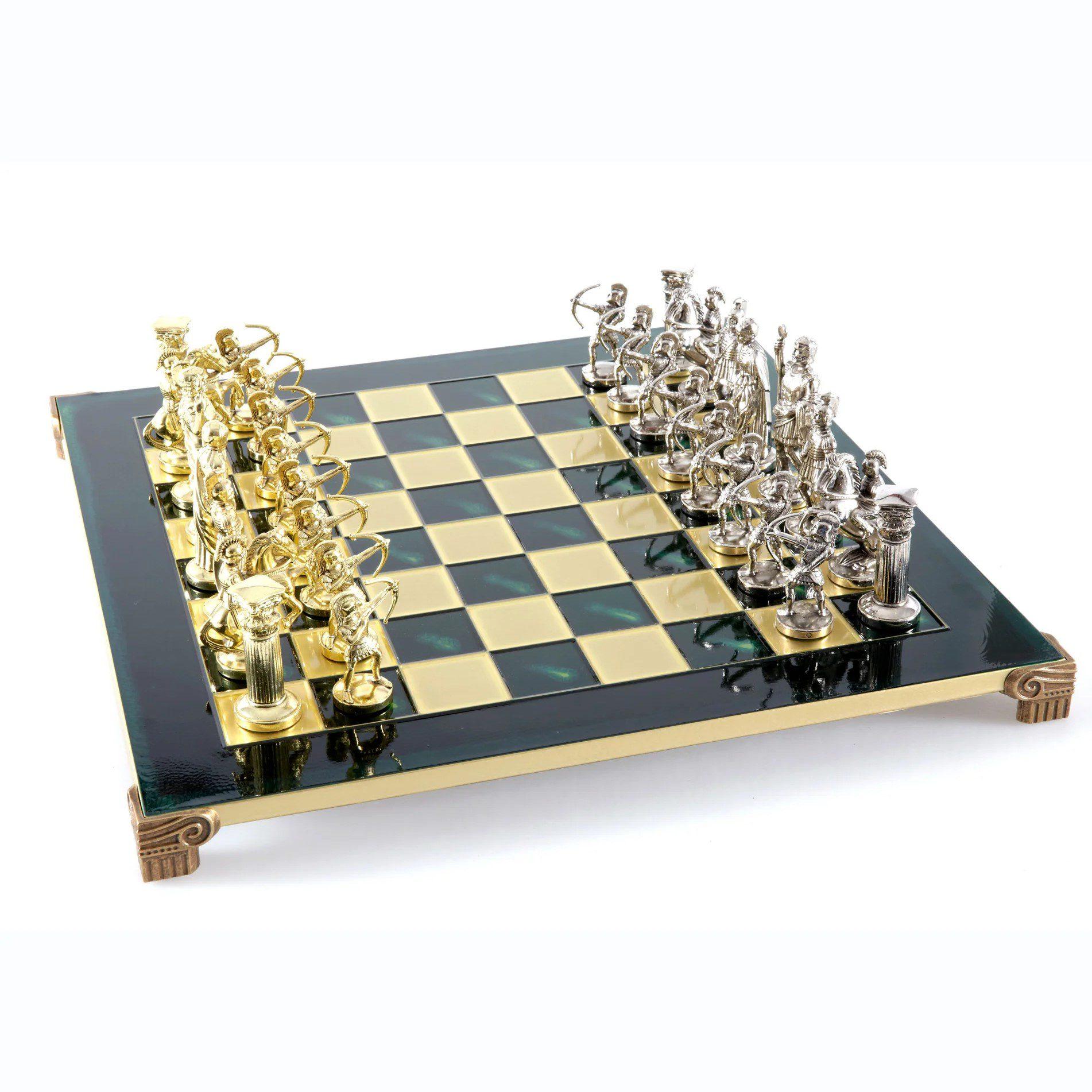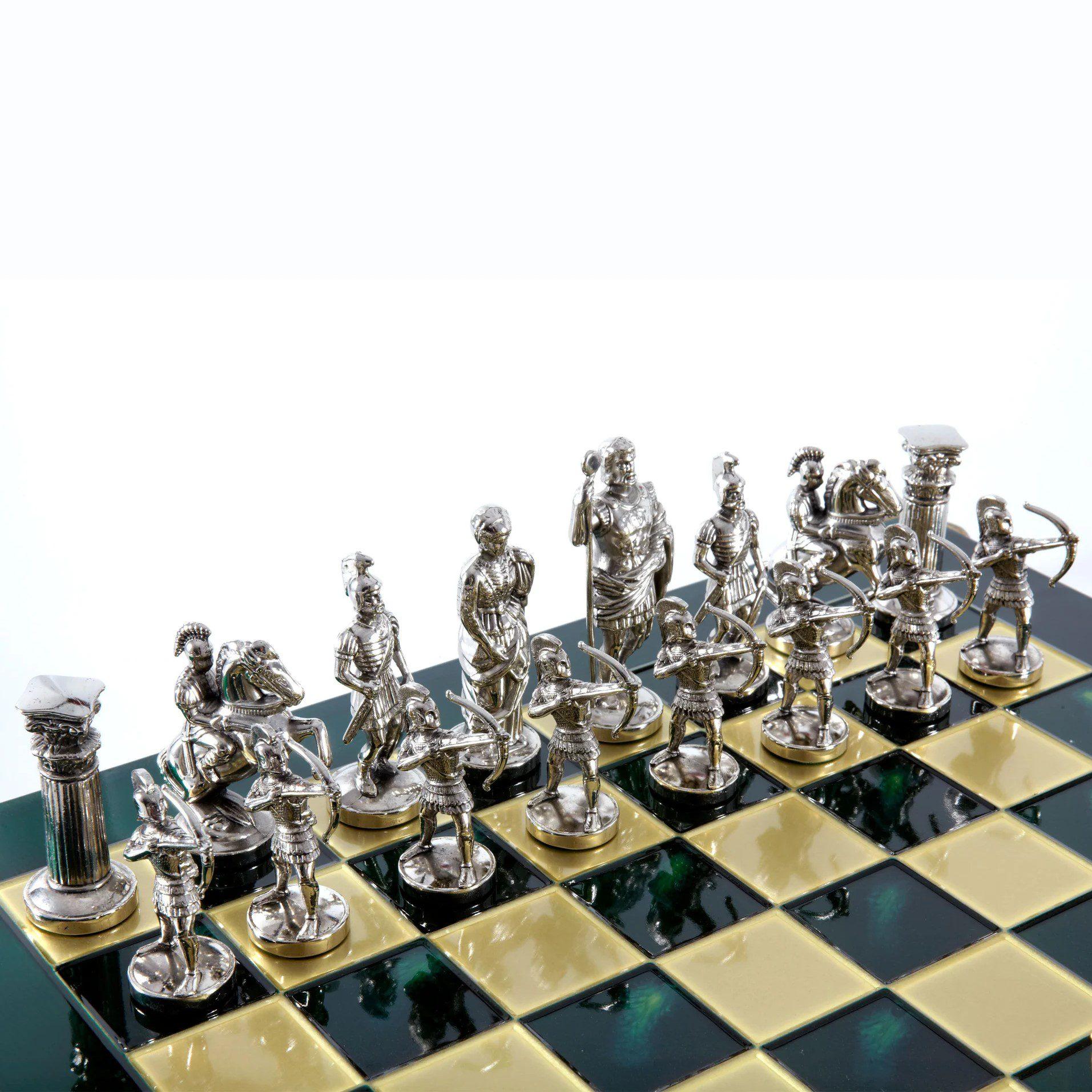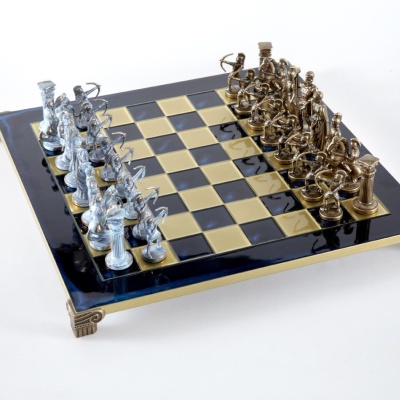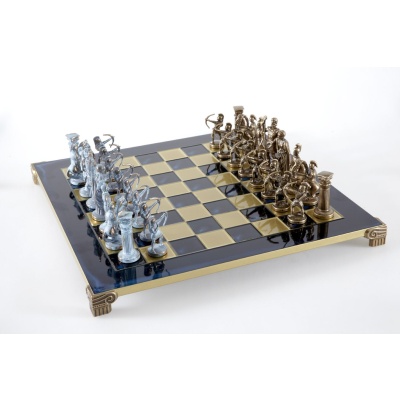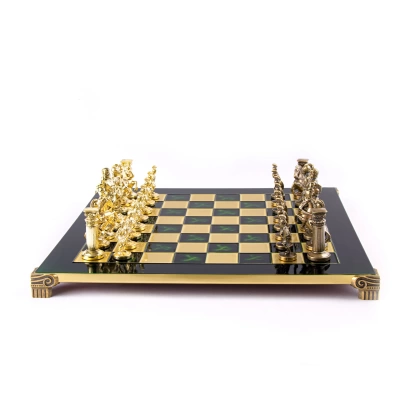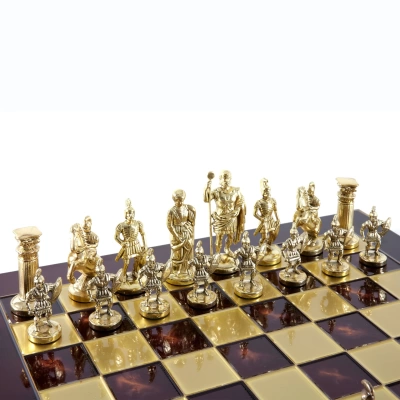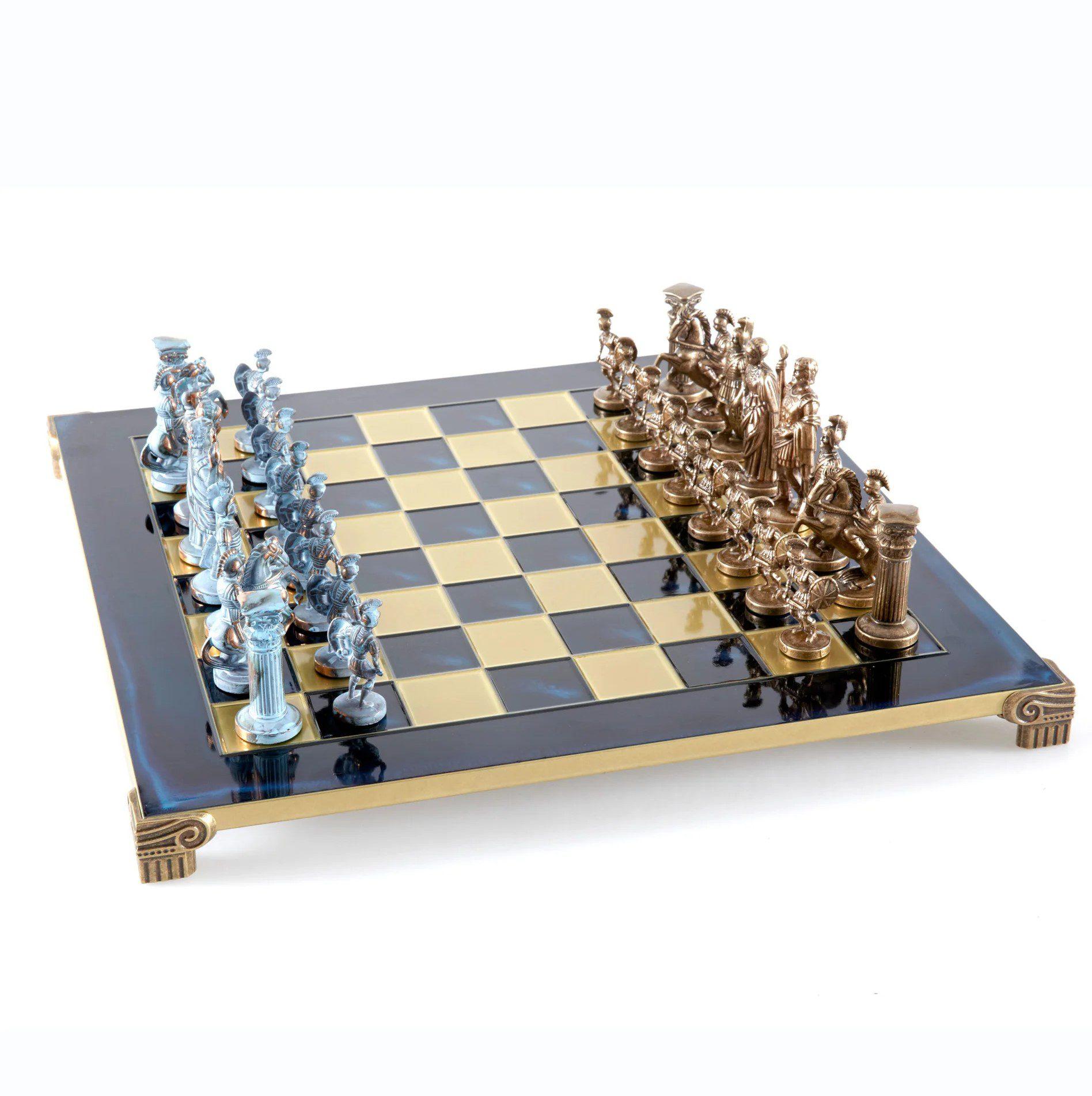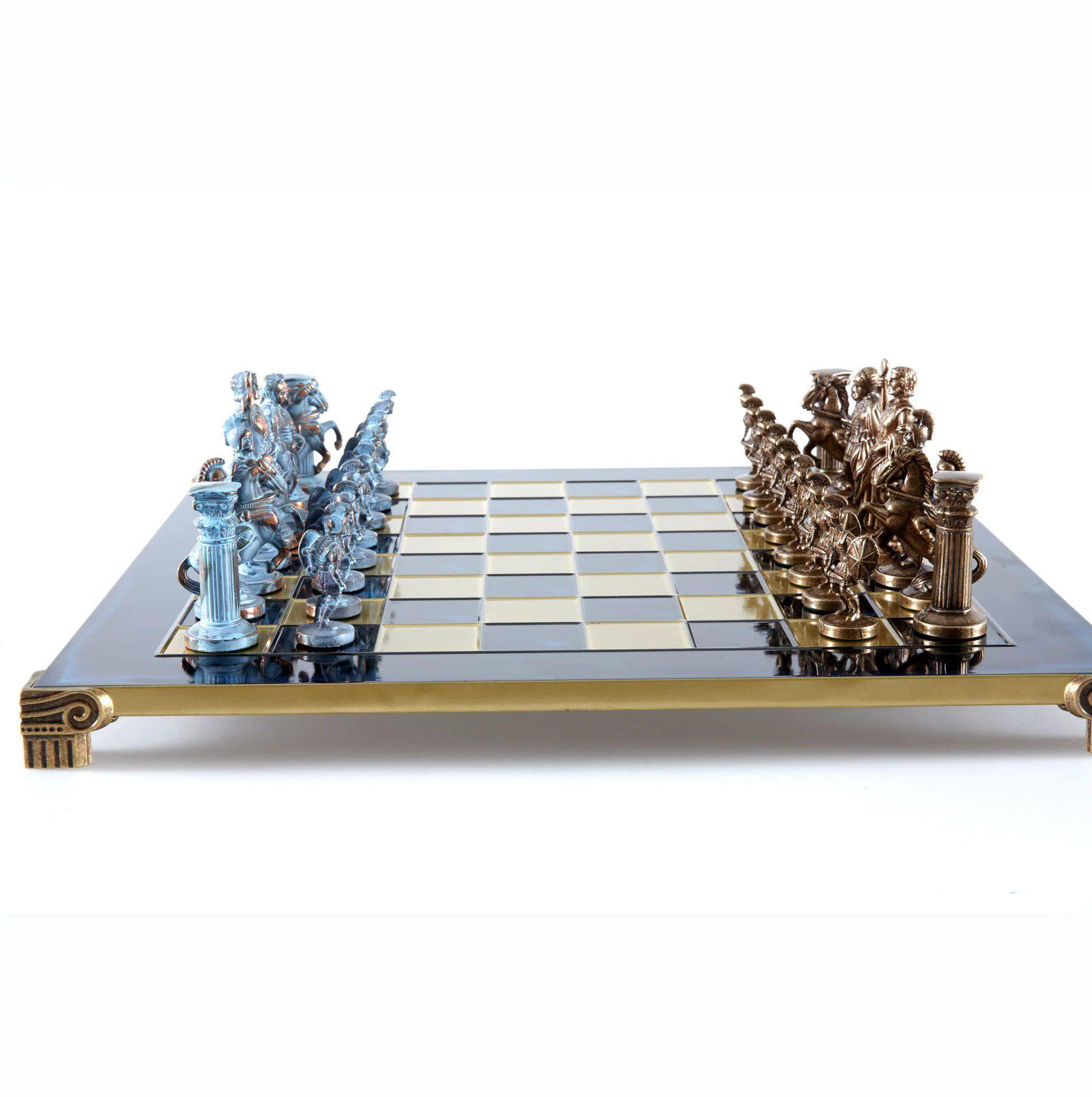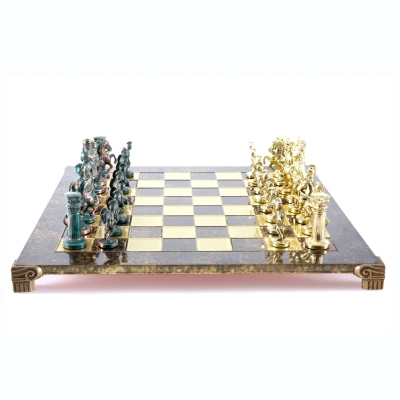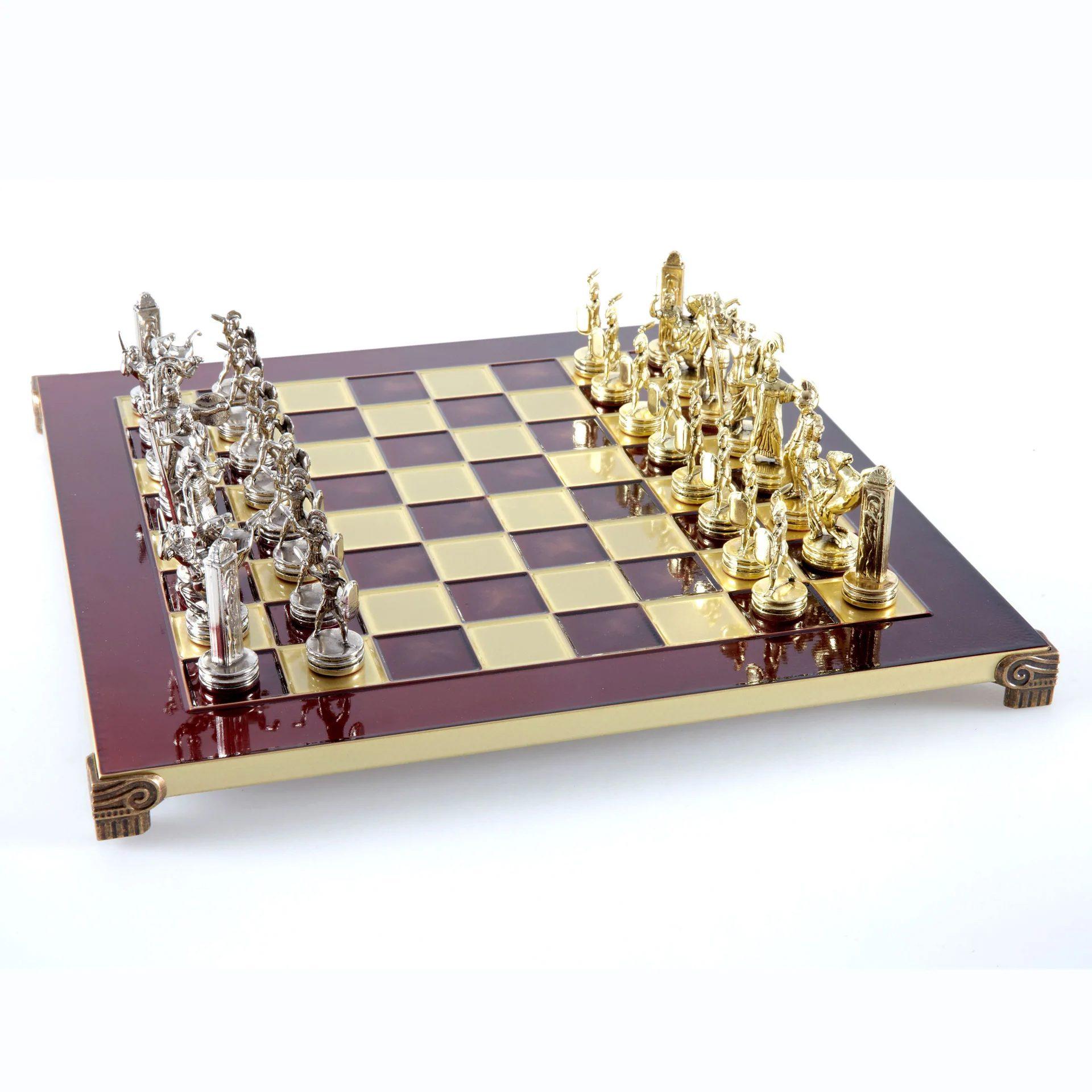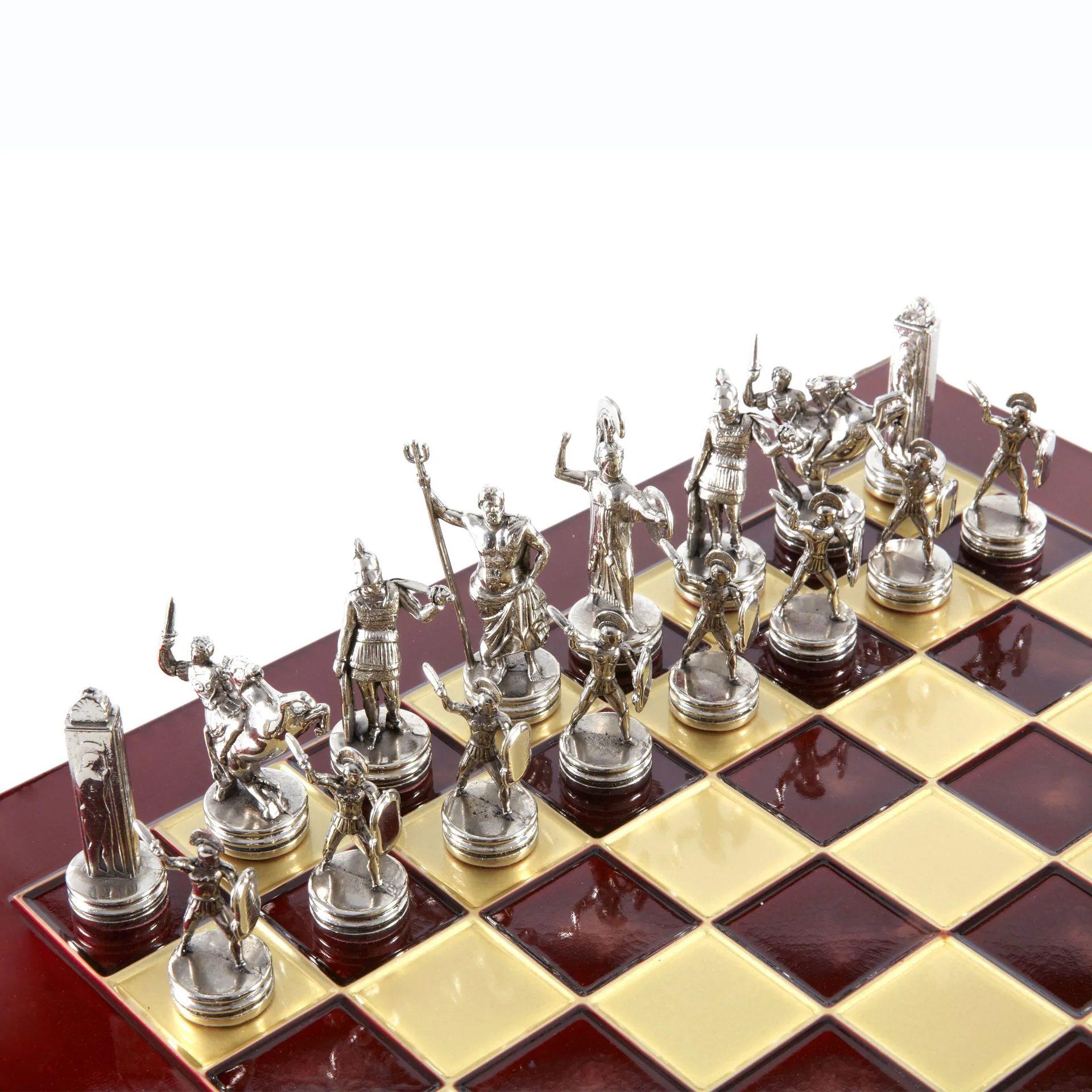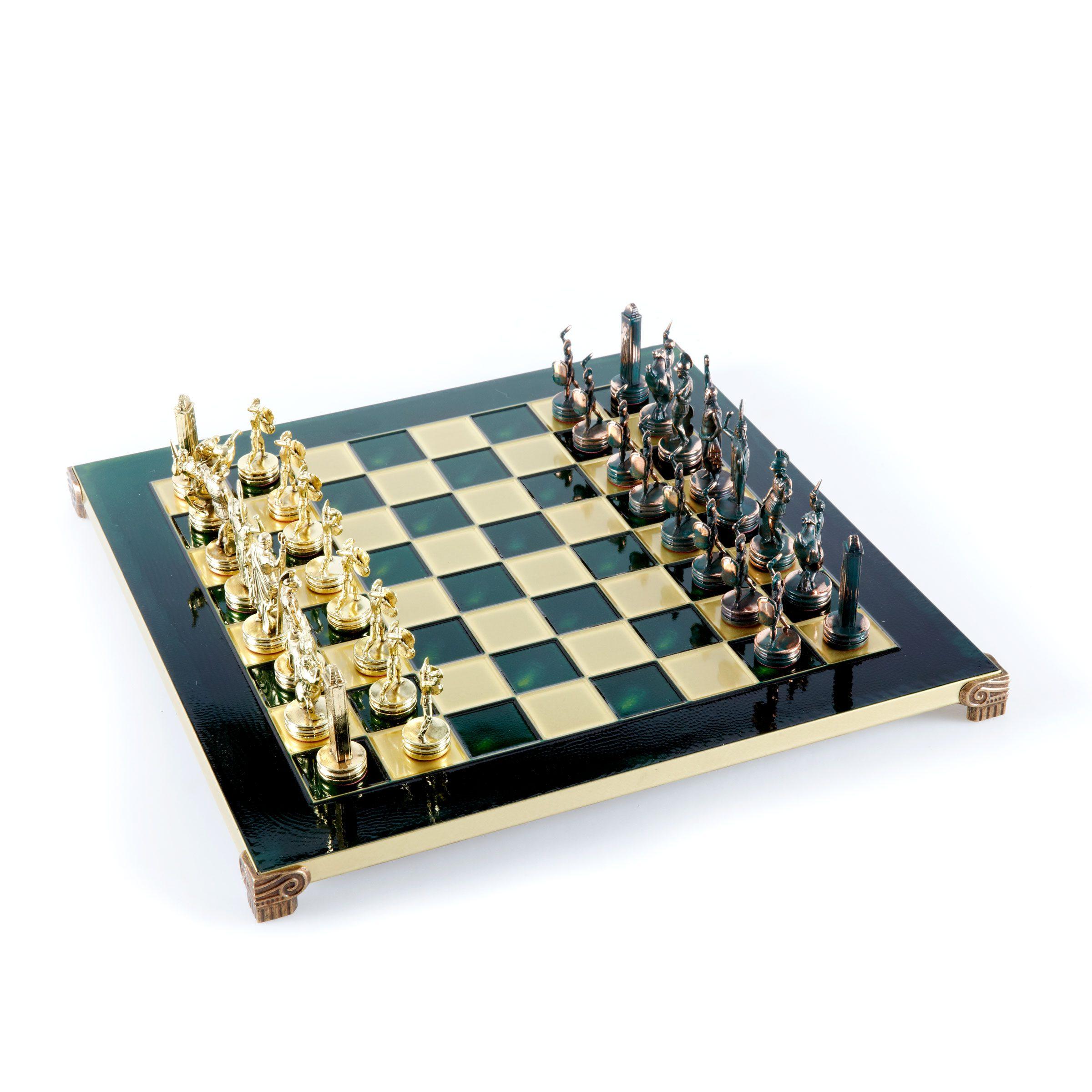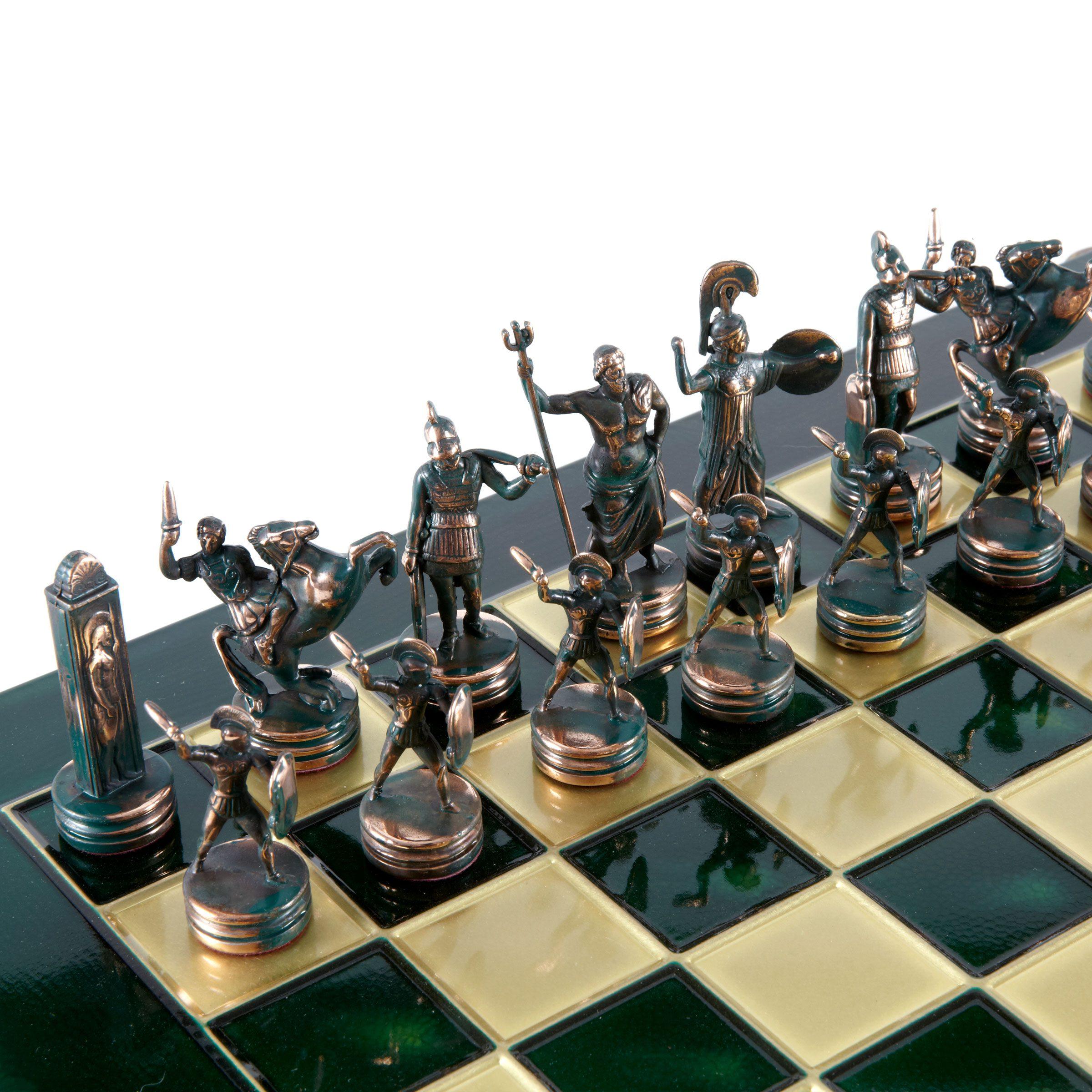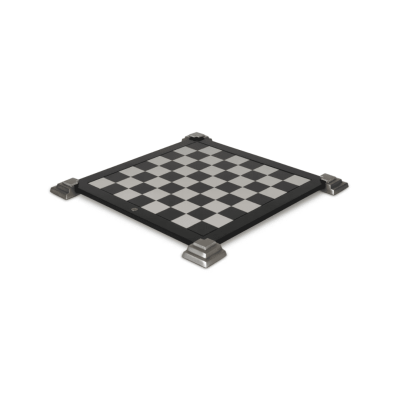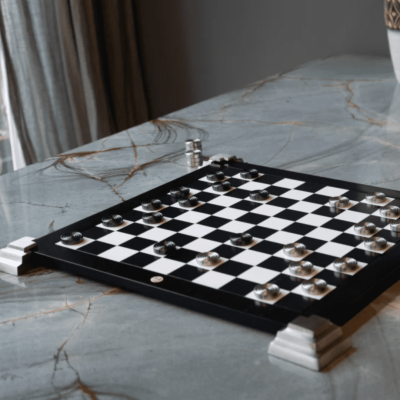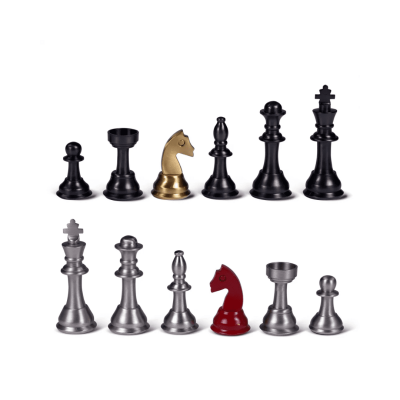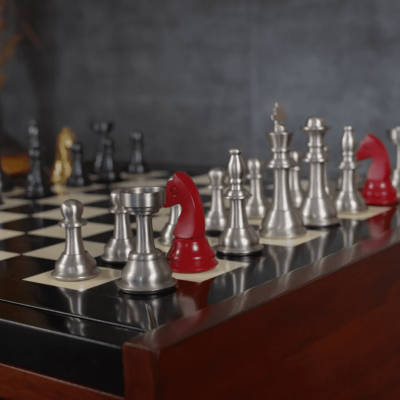Game Boards
-
Archers Metal Chess set with Gold & Silver Chessmen & 44cm Chessboard in Green
SAR 2,200.00The legend
In and out of the battlefield, archery has been a skill of great demand and appreciation. Apart from hunting, archers were the legendary defenders of the fortress walls of the city and the ones who offered covering fire during the battle.
The twin gods Apollo and Artemis were masters in archery and protectors of the archers. Philoctetes was one of the most famous archers, who carried the mythical bow of Hercules.
The Chessmen
Fierce local and international wars characterized that period. Their ferocity is symbolized by the aggressiveness of the Archer (pawn) and the Knight. The posture of the King and Queen indicates their unquestionable leadership. The Bishop reveals his consideration for the imminent battle.
Finally, the Castle is a reproduction of a pillar, the basic symbol of the architectural style during that period.
-
-
Greek Roman Period Metal Chess set with Bronze & Gold Chessmen & 44cm Chessboard in Red
SAR 2,200.00The Chessmen
This period was characterized by fierce local as well as international wars. The aggressiveness of the Pawn and the Knight fully represent the ferocity of these wars. The posture of the King and Queen indicates their unquestionable leadership. The Bishop reveals his consideration for the movements of the imminent battle.
Finally, the Castle is a reproduction of a pillar which characterized the architectural style during that period. -
Greek Roman Period Metal Chess set with Bronze & Blue Chessmen & 44cm Chessboard in Blue
SAR 2,200.00The Chessmen
This period was characterized by fierce local as well as international wars. The aggressiveness of the Pawn and the Knight fully represent the ferocity of these wars. The posture of the King and Queen indicates their unquestionable leadership. The Bishop reveals his consideration for the movements of the imminent battle.
Finally, the Castle is a reproduction of a pillar which characterized the architectural style during that period. -
Greek Roman Period Metal Chess set with Green & Gold Chessmen & 44cm Chessboard in Green
SAR 2,200.00The Chessmen
This period was characterized by fierce local as well as international wars. The aggressiveness of the Pawn and the Knight fully represent the ferocity of these wars. The posture of the King and Queen indicates their unquestionable leadership. The Bishop reveals his consideration for the movements of the imminent battle.
Finally, the Castle is a reproduction of a pillar which characterized the architectural style during that period. -
Greek Mythology Metal Chess set with Gold & Silver Chessmen & 36cm Chessboard in Red
SAR 1,800.00The legend
A glorious city was the bone of contention between two powerful gods. The God of the Sea, Poseidon and Goddess of Wisdom, Athena, each one wanted the city to be named after themselves. The divine conflict was fierce so Zeus declared that each god had to make an offer to the citizens. Poseidon lifted his trident and struck the rock of the Acropolis where sea water burst out. “It will warn you for upcoming storms. Your city will conquer the seas”, he said. Athena knelt and touched the ground where an olive tree started to grow. “For food, oil, wood and light. Your city will become the symbol of civilization”. Despite the rage of Poseidon, Athena’s gift was preferred and ever since the city is called Athens.
The Chessmen
Greek sculptors loved to recreate this divine conflict through their art. The King is a replica of the famous statue “Poseidon of Melos” (2nd cent. B.C.), and the Queen represents the glorious “Athena Promachos” (450 B.C., Acropolis Museum). A bronze Hellenistic statue has inspired the Bishop and the Knight is a part of the marble facade of Parthenon sculptured by Pheidias. The castle is a reproduction of one of the most admirable Attic stele devoted to young Aristion who died in battle. Finally, the Pawn is a bronze statue of a fully armed warrior in 500 B.C.
-
Chess Greek Mythology Green medium
SAR 1,800.00The legend
A glorious city was the bone of contention between two powerful gods. The God of the Sea, Poseidon and Goddess of Wisdom, Athena, each one wanted the city to be named after themselves. The divine conflict was fierce so Zeus declared that each god had to make an offer to the citizens. Poseidon lifted his trident and struck the rock of the Acropolis where sea water burst out. “It will warn you for upcoming storms. Your city will conquer the seas”, he said. Athena knelt and touched the ground where an olive tree started to grow. “For food, oil, wood and light. Your city will become the symbol of civilization”. Despite the rage of Poseidon, Athena’s gift was preferred and ever since the city is called Athens.
The Chessmen
Greek sculptors loved to recreate this divine conflict through their art. The King is a replica of the famous statue “Poseidon of Melos” (2nd cent. B.C.), and the Queen represents the glorious “Athena Promachos” (450 B.C., Acropolis Museum). A bronze Hellenistic statue has inspired the Bishop and the Knight is a part of the marble facade of Parthenon sculptured by Pheidias. The castle is a reproduction of one of the most admirable Attic stele devoted to young Aristion who died in battle. Finally, the Pawn is a bronze statue of a fully armed warrior in 500 B.C.
-
AUTHENTIC MODELS Game Board with 2-Sides
SAR 1,400.00AUTHENTIC MODELS Game Board with 2-Sides made of Wood and Metal 47x47x3 cm
-

